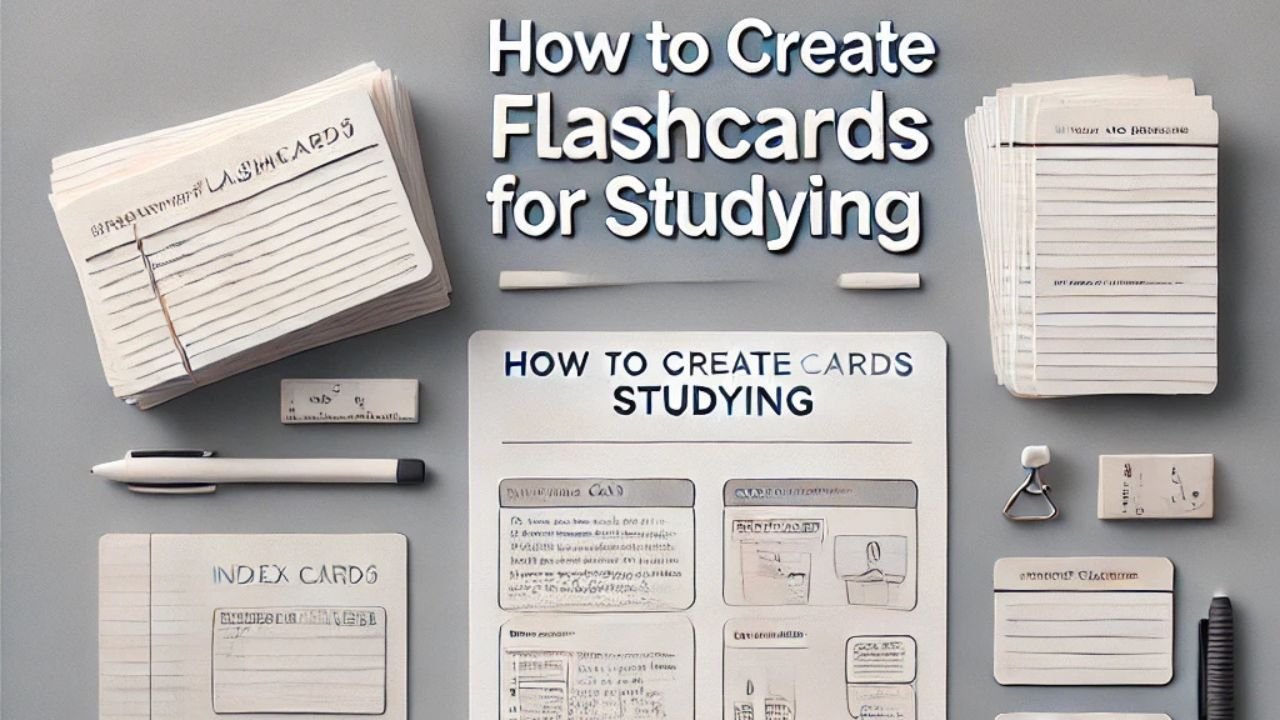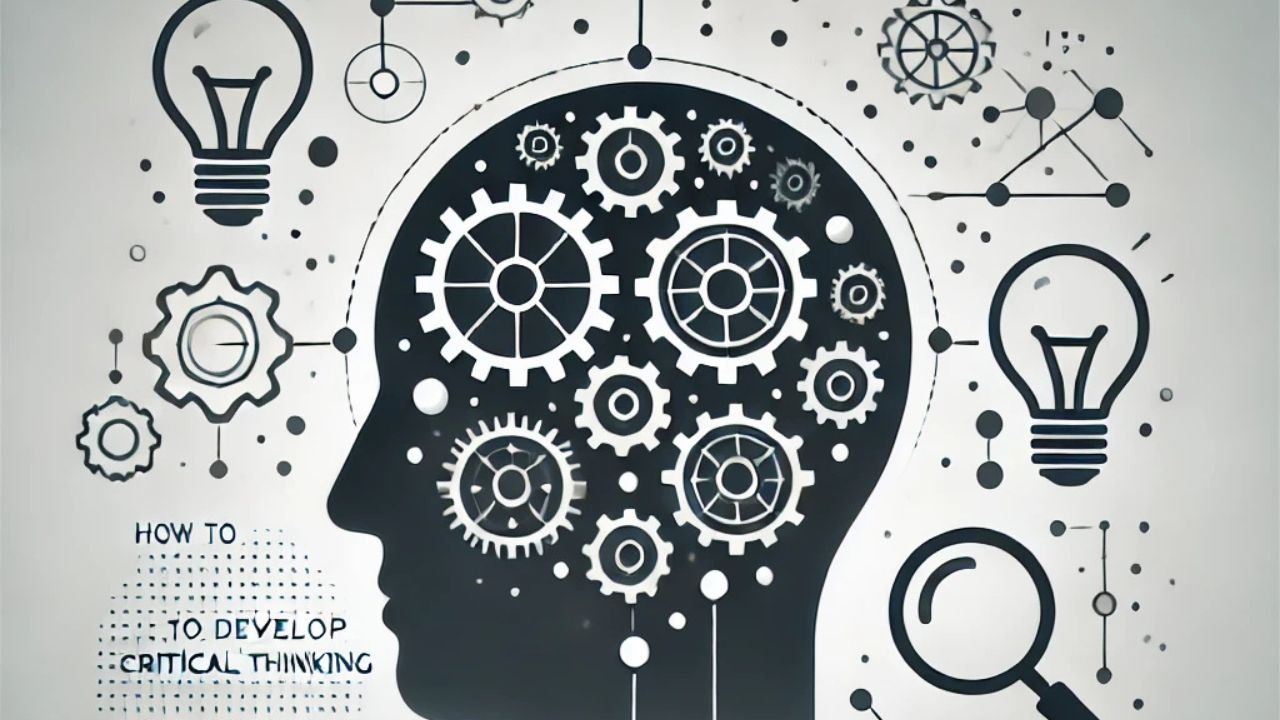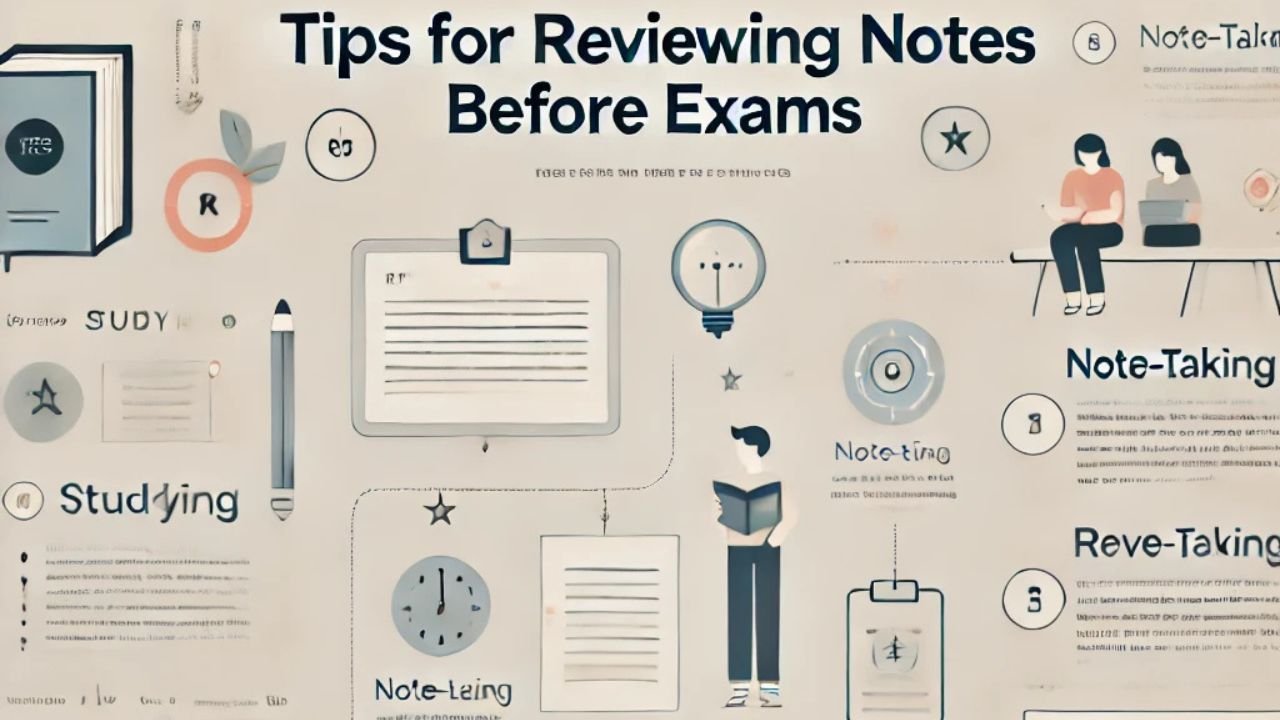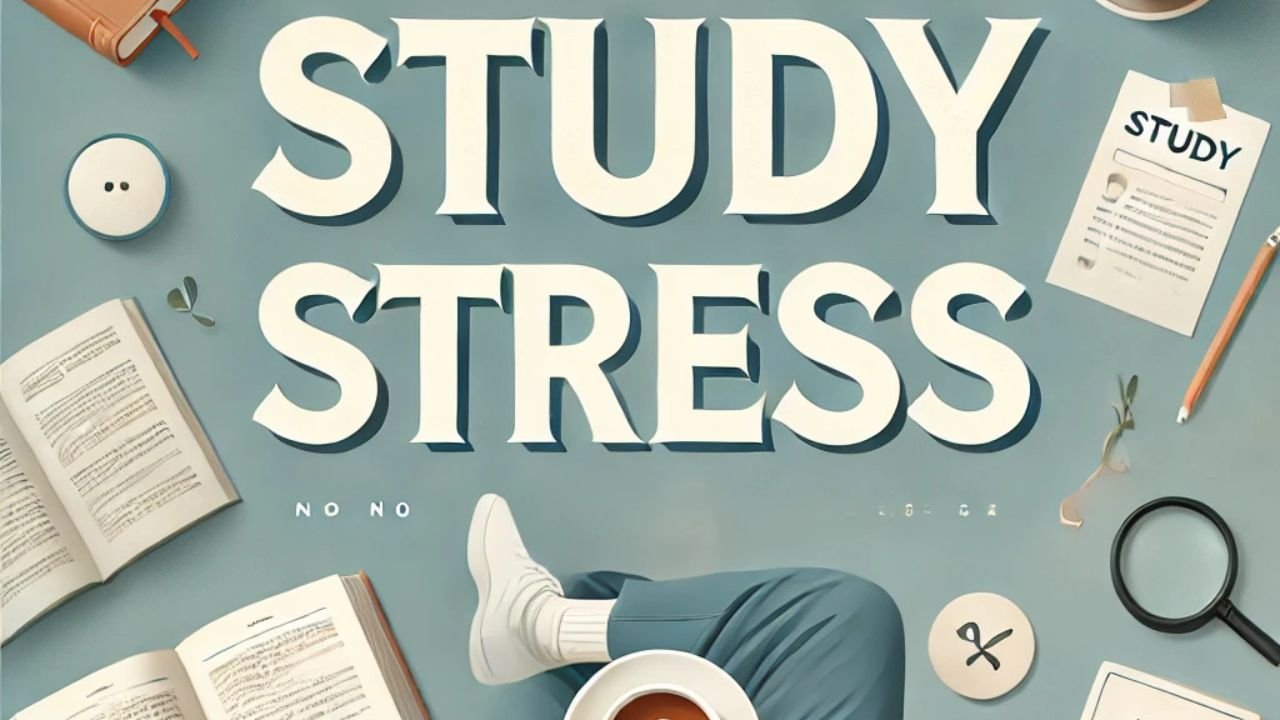Flashcards have long been a favorite study tool for students of all ages. They provide a simple, yet highly effective way to reinforce memory, test your knowledge, and review key concepts. In this in-depth guide, we’re going to explore how to create flashcards for studying that not only help you ace your exams but also make your study sessions more interactive and enjoyable. Whether you’re a visual learner, a hands-on student, or someone looking to improve retention, these strategies will set you on the path to academic success.
Why Flashcards Work: The Science Behind the Study Tool
Flashcards are more than just pieces of paper with information on them—they leverage several cognitive processes to enhance learning:
Active Recall
Active recall is a learning method that involves deliberately retrieving information from your memory as you study. When you flip a flashcard, your brain works to retrieve the information, reinforcing neural pathways and making it easier to recall the information later. This method has been shown to be far more effective than passive review techniques.
Spaced Repetition
Spaced repetition is a strategy where you revisit flashcards at progressively longer intervals to enhance retention. This method combats the forgetting curve by reintroducing information just as it’s about to be forgotten. Many flashcard apps, like Anki and Quizlet, are built around this concept, ensuring that you review the material exactly when you need it.
Visual and Kinesthetic Learning
For many students, creating and handling physical flashcards can engage multiple senses, which boosts retention. The process of writing down the information and visually processing it helps solidify the content in your memory.
Benefits of Using Flashcards for Studying
Before diving into how to create flashcards for studying, let’s look at the benefits that make flashcards an indispensable study tool:
Improved Memory Retention
By repeatedly testing your knowledge, flashcards help move information from short-term to long-term memory. They’re particularly effective for subjects that require memorization, such as languages, biology, history, or even complex formulas in mathematics.
Efficient and Flexible Learning
Flashcards can be used anywhere—on the bus, between classes, or during a study break at home. Their portability makes them an ideal companion for busy students. Whether you prefer physical cards or digital versions, flashcards adapt to your lifestyle.
Personalized Study Sessions
Creating your own flashcards forces you to process the material deeply, as you need to decide what information is key and how best to phrase it. This customization makes the study process more meaningful and tailored to your needs.
Encourages Active Engagement
Unlike passive reading or note-taking, flashcards require you to actively engage with the material. This interaction boosts concentration, helps identify knowledge gaps, and increases your overall understanding of the subject matter.
How to Create Flashcards for Studying: Step-by-Step Guide
Now that you know why flashcards are so effective, let’s get into the details of how to create flashcards for studying. Follow these steps to craft your own personalized study aids:
Step 1: Gather Your Materials
Decide whether you want to create physical flashcards or digital ones. Both have their advantages. For physical cards, you’ll need:
- Index cards or cardstock paper
- Pens, markers, or pencils
- Highlighters for emphasizing key points
For digital flashcards, consider using platforms like Quizlet, Anki, or Cram. These tools allow you to create, store, and review flashcards on your computer or mobile device.
Step 2: Organize Your Information
Before you start writing, organize your study material. Review your notes, textbooks, or lecture slides and identify the main concepts, formulas, vocabulary, or historical dates you need to memorize. Group related information together to create a logical structure for your flashcards.
Tips:
- Use bullet points to outline the key ideas.
- Create categories or subjects to keep things organized.
- Prioritize information based on exam weight or difficulty.
Step 3: Write Clear and Concise Flashcards
In the world of flashcards, simplicity can lead to greater effectiveness. Write your questions or prompts on one side and the answers on the other. Below are a few essential pointers to remember:
- Be Specific: Ask targeted questions that focus on one concept at a time.
- Keep It Simple: Avoid long paragraphs; use keywords and bullet points.
- Use Visuals: Include diagrams, charts, or images where possible. Visual elements can trigger memory and aid comprehension.
- Highlight Key Information: Use color coding or different fonts to emphasize important details.
For example, if you’re studying biology, one flashcard might have “What is the function of mitochondria?” on the front, with “The powerhouse of the cell—produces ATP through cellular respiration” on the back.
Step 4: Incorporate Active Recall and Self-Testing
One of the key benefits of flashcards is the ability to test yourself. Use them to actively recall information:
- Quiz Yourself Regularly: Go through your flashcards, and try to answer each one without looking at the back first.
- Shuffle the Cards: Randomizing the order ensures you’re not simply memorizing the sequence.
- Track Your Progress: Remove cards you consistently get right, and focus on those that are challenging.
Step 5: Use Spaced Repetition for Maximum Retention
Implement spaced repetition to make your study sessions more effective. Review the flashcards at intervals that gradually increase as you become more confident with the material:
- Start Daily: Initially, review your flashcards every day.
- Move to Every Other Day: Once you feel more comfortable, increase the interval.
- Weekly Reviews: As the exam approaches, integrate weekly reviews to reinforce long-term memory.
Digital flashcard apps can automate this process, prompting you when it’s time to review each card.
Step 6: Customize Your Flashcards for Different Subjects
Different subjects may require different approaches to flashcards:
- For Languages: Include vocabulary words, example sentences, and pronunciation tips.
- For Science and Math: Use diagrams, formulas, and problem-solving steps.
- For History and Social Sciences: Focus on key dates, events, and important figures.
- For Exams: Create flashcards with potential exam questions or case studies.
Adapting your flashcard creation to the subject matter ensures that each card is as effective as possible.
Advanced Tips for Creating Flashcards That Stick
Once you’ve mastered the basics of creating flashcards, consider these advanced tips to make your study sessions even more effective:
Use Mnemonics and Memory Tricks
Incorporate mnemonic devices into your flashcards to help remember complex information. For example, create an acronym for a series of steps or use a memorable phrase to link concepts together.
Integrate Technology with Traditional Methods
Don’t hesitate to mix physical and digital flashcards. Some students find that writing out physical cards helps with memory, while digital cards are great for quick revisions on the go.
Update Your Flashcards Regularly
As you progress through your course, update your flashcards to include new information or revise old concepts. This keeps your study material current and relevant.
Share and Collaborate
Consider forming a study group where you can exchange flashcards with classmates. Collaborative learning can expose you to different perspectives and fill in any gaps in your notes.
Visualize Success
Each time you review a flashcard, visualize how the information connects to the bigger picture of your course. Creating mental associations can enhance recall during exams.
Real-Life Success Stories: Flashcards in Action
Many successful students have harnessed the power of flashcards to ace their exams. Let’s explore a few motivational examples:
Case Study: Sarah’s Language Mastery
Sarah was struggling to memorize vocabulary for her Spanish class. She started creating flashcards with the Spanish word on one side and the English translation, along with a sentence using the word, on the other. By incorporating images and color coding for different parts of speech, Sarah was able to remember words faster and more effectively. When exam day came, her improved recall was evident, and she scored one of the highest marks in the class.
Case Study: John’s Chemistry Breakthrough
John, a college chemistry major, found that traditional study methods were not helping him grasp complex reactions and formulas. He began creating flashcards that broke down each reaction into its steps, complete with diagrams of molecular structures. John’s flashcards not only made his study sessions more interactive but also helped him visualize the chemical processes. As a result, his grades improved significantly, and he gained a deeper understanding of the subject matter.
Overcoming Common Challenges When Using Flashcards
While flashcards are an incredibly effective study tool, you might face some challenges along the way. Here are a few common issues and how to overcome them:
Boredom and Monotony
It’s easy to get bored with repetitive review sessions. To counter this:
- Mix It Up: Shuffle your cards regularly or change the order.
- Gamify Your Study: Challenge yourself to beat your previous scores on recall speed.
- Incorporate Rewards: Treat yourself after a successful study session.
Information Overload
When you have too many flashcards, it can become overwhelming.
- Prioritize Key Concepts: Focus on the most challenging topics first.
- Break It Down: Divide your flashcards into manageable sets and review them in shorter, focused sessions.
- Use Spaced Repetition: This helps ensure you’re reviewing the right amount at the right time without overloading your brain.
Keeping Your Flashcards Updated
As your course evolves, your flashcards need to be revised too.
- Regular Reviews: Set aside time weekly to update and refine your cards.
- Feedback Loop: Use exam results to identify which flashcards need improvement or additional details.
The Future of Flashcards: Embracing Digital Innovations
In recent years, digital flashcard apps have transformed the way students study. These tools incorporate AI algorithms and data analytics to optimize review schedules and personalize learning experiences.
Benefits of Digital Flashcards
- Automation: Digital apps can automate spaced repetition, reminding you when it’s time to review each card.
- Portability: Access your flashcards from your phone, tablet, or computer anytime, anywhere.
- Collaboration: Many platforms allow you to share flashcards with peers, enabling collaborative study sessions.
- Multimedia Integration: Incorporate images, audio clips, or even videos into your flashcards to make them more engaging.
Popular Flashcard Apps
Some widely used flashcard apps include:
- Anki: Known for its powerful spaced repetition algorithms.
- Quizlet: Offers various study modes, including games and tests.
- Cram: Provides a simple interface with a focus on quick review sessions.
Customizing Your Flashcards for Different Learning Styles
Every student learns differently, and your flashcards should reflect your personal learning style. Here are some ways to tailor your flashcards:
For Visual Learners
- Include Images: Draw diagrams or add pictures that illustrate key concepts.
- Color Code: Use different colors to highlight various sections or types of information.
- Use Infographics: Create mini-infographics to summarize complex data.
For Auditory Learners
- Record Audio: Pair your flashcards with recorded explanations or mnemonic songs.
- Discuss Aloud: Read the content out loud when reviewing your cards to reinforce auditory memory.
For Kinesthetic Learners
- Interactive Elements: Use physical flashcards and actively move them around while studying.
- Write It Out: The act of writing your flashcards by hand can reinforce memory for tactile learners.
Integrating Flashcards into a Comprehensive Study Routine
Flashcards are a powerful tool, but they work best when integrated into a broader study strategy. Here’s how you can make flashcards a part of your overall exam preparation plan:
Combine with Other Study Methods
- Pair with Summaries: After reviewing flashcards, write a brief summary of what you learned to reinforce the material.
- Group Study Sessions: Use flashcards during study groups to quiz each other and discuss challenging topics.
- Practice Exams: Incorporate flashcard topics into practice tests to simulate exam conditions.
Monitor Your Progress
- Track Performance: Keep a record of which flashcards you struggle with and revisit them more frequently.
- Set Goals: Establish daily or weekly targets for the number of flashcards to review.
- Adjust as Needed: Be flexible and modify your flashcard content based on feedback and test results.
Final Thoughts: Your Path to Exam Success with Flashcards
Learning how to create flashcards for studying is more than just a method—it’s a journey towards a more effective and engaging study routine. By following the steps outlined in this guide, you can build a personalized set of flashcards that cater to your unique learning style and help you retain information more efficiently.
Flashcards not only serve as a practical study aid but also empower you to take control of your learning process. With active recall, spaced repetition, and customization at your fingertips, you’re equipped with a proven strategy to tackle even the toughest exam subjects. Remember, the key to success is consistency. The more regularly you review and update your flashcards, the more confident you’ll become when exam day arrives.
As you embark on your flashcard creation journey, keep experimenting with different designs, techniques, and digital tools until you find the perfect fit for your study habits. Whether you’re preparing for finals, midterms, or any important test, flashcards can be the secret weapon that transforms your revision process and propels you toward academic excellence.
Recap: How to Create Flashcards for Studying
- Gather Your Materials: Choose between physical or digital flashcards based on your preference.
- Organize Your Information: Break down your study material into manageable, focused segments.
- Write Concisely: Create clear, targeted questions and answers that address key concepts.
- Incorporate Active Recall: Regularly quiz yourself and shuffle the cards to enhance memory.
- Apply Spaced Repetition: Review your flashcards at strategic intervals to boost long-term retention.
- Customize for Subjects: Adapt your flashcards for different disciplines using visuals, mnemonics, or audio elements.
- Integrate into Your Routine: Combine flashcards with other study methods and track your progress for continuous improvement.
By following these steps, you’re not just creating flashcards—you’re crafting a powerful study tool that can transform your academic performance.
Embrace the Flashcard Revolution
The way we study is evolving, and flashcards remain one of the most versatile and effective tools available. As technology advances, integrating digital flashcards with traditional methods will only make your study sessions more engaging and efficient. Embrace this revolution in studying by exploring both physical and digital options, and find what resonates best with your learning style.
No matter what subject you’re studying, whether it’s a foreign language, a challenging science course, or a historical timeline, flashcards offer a unique way to distill complex information into bite-sized pieces that are easy to review and remember.
Conclusion
Mastering the art of how to create flashcards for studying can be a game-changer in your academic life. By understanding the science behind flashcards, harnessing active recall, and leveraging spaced repetition, you’re well-equipped to boost your memory retention and excel in exams. This comprehensive guide has provided you with actionable tips, practical steps, and advanced strategies to design flashcards that cater specifically to your needs.
As you integrate these techniques into your daily study routine, remember that consistency and personalization are key. Every student is unique, so don’t hesitate to experiment and modify your flashcard system until you find the perfect balance. With time and practice, you’ll not only improve your exam scores but also develop a lifelong study habit that enhances your overall learning experience.
Thank you for joining me on this journey through the world of flashcards. I hope you found these insights helpful and that they inspire you to take control of your study habits. Now is the time to create, review, and master your notes using flashcards. Happy studying, and here’s to your success in every exam!
If you enjoyed this guide, please share it with your classmates and friends. Stay tuned for more tips and strategies on effective studying and exam preparation. Your path to academic excellence starts with one flashcard at a time!




